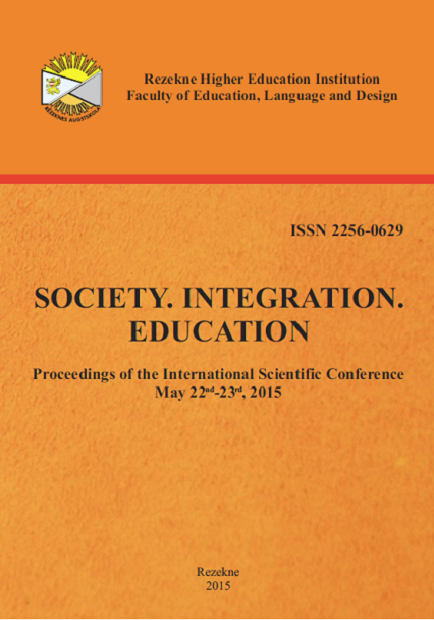Linking Theory and Practice in Business Study Process
DOI:
https://doi.org/10.17770/sie2015vol1.301Keywords:
experiential learning, IMP³rove, innovation management, innovation metrics, linking theory and practice, SMEsAbstract
The research paper presents a teaching methodology of Innovation management by using a practical innovation management assessment on-line tool. Empirical study is made with a group of business students, and the results of the research are presented for discussion.
The theoretical part of the paper is based on desk research on innovation assessment methods and IMP³rove as one of them. IMP³rove is an on-line assessment and benchmarking platform for a comprehensive assessment of companies’ innovation management.
The practical part of the research is focusing on a case study in the RISEBA University. The use of the IMP³rove platform is integrated in the study process. IMP³rove platform is used for academic purposes to link innovation management theory and practice. The latest two years students’ feedback on the IMP³rove assessment method and its usefulness as a learning method are summarized and analyzed, and proposed for discussion and further improvements.
References
Bessant, J. (2003). High-Involvement Innovation. Building and Sustaining Competitive Advantage Through Continuous Change. Cranfield University, UK: Wiley.
European Commission, (2006). European Innovation Management Landscape P. Sibo (Ed.).Augsburg Germany: Duckerei Joh. Walch, GmbH & CO.
European Communities (2008). Insights on Innovation Management in Europe. Tangible results from IMP³rove. Luxembourg: Publications Office of the European Communities.
European Union (2012). IMP³rove: High-Impact Innovation management. Luxembourg: Publications Office of the European Union.
European Union Scoreboard (2014). Retrieved 26.02.2015. from: http://ec.europa.eu/enterprise/policies/innovation/policy/innovation-scoreboard/index_en.htm
IMP³rove website (2015). Retrieved 26.02.2015. from: https://www.improve-innovation.eu/
Kolb, D. & Fry, R.(1975). Towards a theory of applied experiential learning. In C. Coper (Ed.)Theories of Group Processes. Chichester: Wiley.
Lapina,G. & Slaidins, I. (2014).Teaching Open Innovation at the Universities of Latvia RISEBA, Journal of Business Management 8, 198-207.
Muller, A., Valikangas , L.& Merlyn, P. (2005). Metrics of innovation: guidelines for developing a customized suite of innovation metrics, Strategy and Leadership, 33, 37-45. Emerald Group publishing Limited.
OECD (2011). Skills for Innovation and research. Retrieved 26.02.2015. from: http://www.oecd.org/science/inno/skillsforinnovationandresearch.htm
OI-NET (2014). EU Lifelong Learning Programme Project “The European Academic Network for Open Innovation”. Retrieved 22.02.2015. from: http://www.oi-net.eu/
Penttila, T. & Kairisto-Mertanen, L. (Eds.) (2013). Developing Innovation Competences through Boundary Crossing Social Learning environment, Pedagogical Views on Innovation Competences and Entrepreneurship. Turku University of applied Sciences, 34-44, Retrieved 26.02.2015. from: http://julkaisut.turkuamk.fi/isbn9789522164407.pdf
RISEBA website. Retrieved 26.02.2015. from: http://www.riseba.lv/en/master-studies.html
Tidd, J., Besant, J. & Pavitt, K. (2003). Managing Innovation. New York: John Wiley and Sons, Ltd.
Trias,F.& Kotler, P. (2011). Winning at innovation.UK: Palgrave Macmillan






